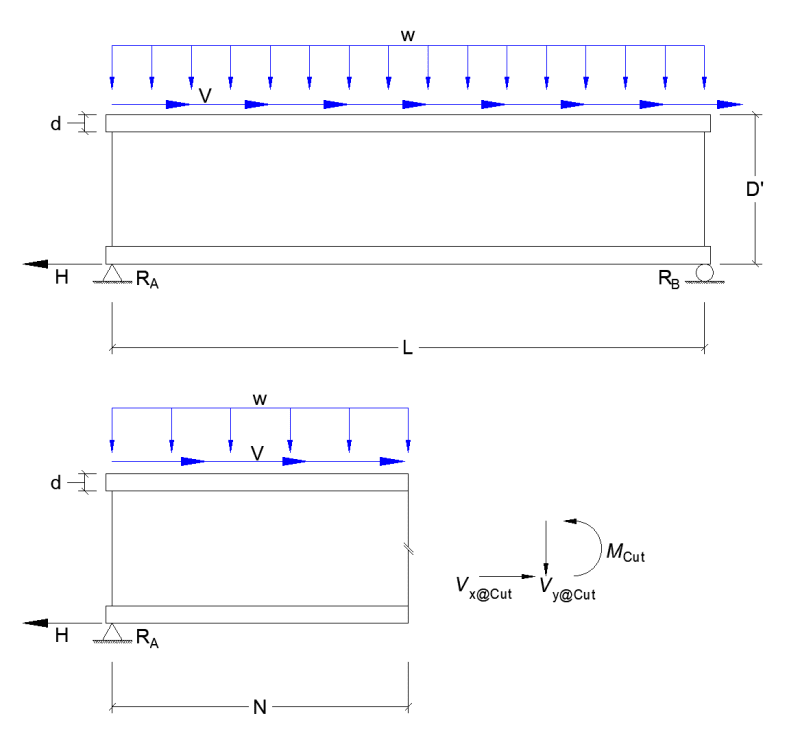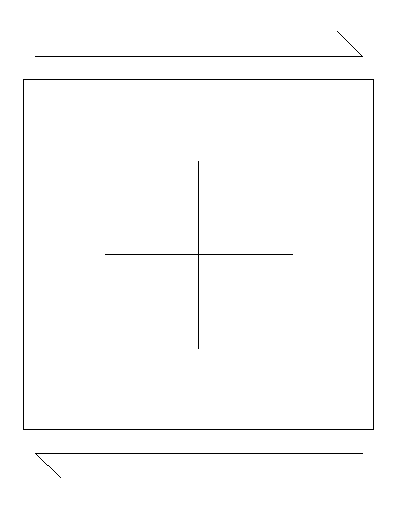I'm attempting to define the internal shear stresses within a non-rectangular structural drag member and struggling a bit with my understanding of axial forces and how they might affect internal stresses in said member. Take the image below, showing a simple span member resisting an axial eccentric drag load. If we take a cut at a nominal location along the span, 'N', we should be able to determine the internal stresses as a local moment and local shear.
My question comes from the idea of how do I include the axial component loading onto the shear diagram? From the detail below, I have an axial strap load 'H' located at support 'A' taking the accumulated eccentric load overtop the member. My thought is that this 'H' induces a large local shear that is transferred from the web of the member to the flange, and then through the nails/weld of the strap to the LFRS below. I'm struggling to find a good written resource on this concept. Any thoughts?

My question comes from the idea of how do I include the axial component loading onto the shear diagram? From the detail below, I have an axial strap load 'H' located at support 'A' taking the accumulated eccentric load overtop the member. My thought is that this 'H' induces a large local shear that is transferred from the web of the member to the flange, and then through the nails/weld of the strap to the LFRS below. I'm struggling to find a good written resource on this concept. Any thoughts?


